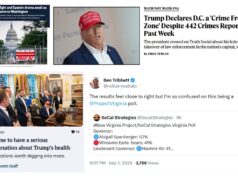Cross posted from Scaling Green
On Monday night, I attended a program in Arlington, Virginia about an impending U.S. Forest Service decision on whether to allow fracking and horizontal drilling for natural gas in the George Washington National Forest in Virginia. As the organizers of the program explained, fracking in the George Washington National Forest “could threaten a range of resources – including the headwaters of the Potomac River, the D.C. area’s major drinking water source.”
I wrote yesterday about Sister Maureen Fiedler’s work on fighting to bring the Bluegrass Pipeline to “something of a standstill.” Now, I want to focus on a talk by Nicole Condon, Water Communications Coordinator at the District of Columbia Water and Sewer Authority (“DC Water”). Condon made a few important points about the potential risks for the DC metropolitan area’s water supply from fracking the George Washington National Forest.
- Given that the Potomac River is our “sole drinking water source,” that the GW National Forest is “in our headwaters,” and that forested areas “are extremely important for downstream water quality,” there are “a lot of uncertainties that really need to be addressed before we can feel good about something like [fracking to be] happening in our headwaters.”
- “If contamination were to occur, we may be unable to determine what chemicals are involved,” and that uncertainty makes it “extremely difficult to prepare for any kind of response in the event that these chemicals were to get into the water.” In general, given the lack of information, it is “difficult to understand what the risk may be to our water supply.”
- “Until it can be proven that hydraulic fracturing will not have a negative impact on our drinking water supply, we want the Forest Service to exercise caution” and will continue to support “a prohibition on hydraulic fracturing in the GW National Forest.”
- Industry argues that a 15-year moratorium is too long, but DC Water believes that “15 years is a pretty small amount of time when you start thinking about some of the long-term impacts that could potentially occur in some kind of contamination issue or spill.“
- “The quality of our product and the health of our customers is our top priority.”




![Monday News: Trump’s Lunacy Pushes China, Russia, India, etc. Together; “Happy Labor Day. Donald Trump and Elon Musk Are Screwing Workers.”; “Where is the [media’s] intense focus on Trump’s failing health?”; ““Trump says he is not a dictator. Isn’t he?”](https://bluevirginia.us/wp-content/uploads/2025/09/montage0901-238x178.jpg)









